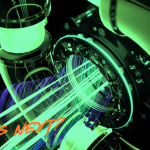With Optics, Photonics, and the University of Arizona’s BIO5 Institute
Let’s be real, I’m not an expert in these industries. But I’ve been in the trenches as an engineer, designer, and systems hacker. I’ve built tech, integrated chaos, and mentored over 3,000 startups (from underwater basketweaving, industrial automation, hydrogen fuel cells, to biotech and medical devices) across 10+ scrappy emerging ecosystems. I’ve seen mindset traps, resource gaps, tribal gatekeeping from those afraid to lose control, and thankfully, breakthrough innovation.
I’ve also spent two decades inside the abundance of mindset-driven Silicon Valley. That experience rewired how I see potential.
What am I an expert in? Curiosity. Patterns. Ecosystems. Value Delivery, Opportunity.
Our region is sitting on untapped potential. We need bold moves, not business-as-usual. An innovation hub here could change the game, slowing brain drain, fueling talent, and creating the kind of economy that works for more of us.
This series isn’t about theory. It’s about lighting a fire. Let’s collaborate bigger, move faster, and make some noise.

Biotech and Medtech Innovation is part of the Optics Valley vortex of today’s tech and tomorrow’s breakthroughs. Harness it. Own it. Drive growth. The optics-photonics-enabled industries will surpass $1 trillion globally by 2030.
In the rapidly evolving fields of biotechnology and healthcare, few technologies are as fundamentally transformative as optics and photonics. These disciplines, centered on generating, manipulating, and detecting light, enable new levels of precision in diagnostics and treatment and unlock new frontiers in biological discovery.
At the heart of this transformation lies a powerful ecosystem of research, commercialization, and talent development exemplified by the University of Arizona’s BIO5 Institute. Together, advances in photonics and the cross-disciplinary engine of BIO5 are positioning Arizona as a growing hub for medtech, biotech, and life sciences innovation.
This article explores how optics and photonics power diverse applications across biotechnology and medical devices, and how BIO5 accelerates these opportunities from lab to market.
Optics and Photonics in Biotech and Life Sciences
The ability to observe, analyze, and measure microscopic and molecular systems is central to scientific discovery in the life sciences. Optics and photonics enable researchers to “see” the unseen tracking cells, decoding genes, and analyzing biomolecules with extraordinary speed and accuracy.
Fluorescence Microscopy
This technique uses light to excite fluorescent tags bound to proteins, organelles, or other structures, making them visible for imaging. It’s indispensable in molecular biology, allowing scientists to study protein dynamics, gene expression, and cellular behavior in real time.
Confocal & Multiphoton Microscopy
Confocal microscopy scans thin layers of cells using a focused laser beam, while multiphoton microscopy penetrates deeper tissues using near-infrared light. These tools produce high-resolution 3D images of cells and live tissues, and are vital for applications in neuroscience, immunology, and cancer biology.
Flow Cytometry
Flow cytometry uses lasers and optical detectors to analyze the physical and chemical characteristics of cells in a fluid stream. It’s used extensively in immunology, cancer diagnostics, and cell sorting technologies, key areas for both research and clinical applications.
DNA Sequencing
Optical systems detect fluorescent signals during next-generation sequencing (NGS), enabling the rapid decoding of millions of DNA fragments. This has revolutionized genomics, enabling everything from personalized medicine to pathogen detection.
Biophotonics Research
Biophotonics explores how light interacts with biological tissues, often combining optics with nanotechnology and biosensing. Applications include real-time tissue imaging, disease detection, and the development of light-based diagnostic tools.
Spectroscopy (Raman and FTIR)
These noninvasive optical techniques detect molecular vibrations to identify chemical compositions. Raman and FTIR spectroscopy are widely used in research and diagnostics to study proteins, pathogens, and drug compounds.
Photonics in Medical Device Innovation
Beyond the research lab, optics and photonics underpin many of the tools doctors use to diagnose and treat disease. These technologies make healthcare safer, less invasive, more accurate, and more accessible.
Optical Coherence Tomography (OCT)
OCT is a noninvasive imaging method that captures high-resolution cross-sectional images of tissues like the retina, skin, and coronary arteries. OCT is widely used in ophthalmology and is expanding in cardiology, dermatology, and oncology.
Laser Surgery
Lasers are used to precisely cut or ablate tissues in various medical fields, such as LASIK in ophthalmology, tumor ablation in oncology, and scar removal in dermatology. They enable less invasive procedures with faster recovery and reduced complications.
Endoscopy
Using fiber-optic cameras and light delivery, endoscopy provides internal visualization of organs without open surgery. This minimally invasive technique is critical in gastrointestinal medicine, pulmonology, and urology.
Pulse Oximetry
This simple, noninvasive device uses red and infrared light to measure blood oxygen levels. Especially critical during the COVID-19 pandemic, it’s standard in hospitals, ambulances, and even smartwatches.
Photodynamic Therapy
Light-activated drugs (photosensitizers) target and destroy cancer cells or infections with minimal harm to healthy tissue. This therapy is gaining traction in oncology and dermatology.
Infrared Thermography
Infrared cameras detect heat patterns, revealing inflammation, infection, or vascular irregularities. Thermography is useful in sports medicine, fever screening, and wound care.
Wearables & Biosensors
Optical sensors in wearable health devices track vital signs like heart rate, hydration, blood oxygen, and glucose levels noninvasively. These innovations are driving personalized, preventive, and remote healthcare solutions.
Emerging & Advanced Applications
As optics and photonics converge with AI, nanotechnology, and computational biology, they enable entirely new healthcare capabilities.
Photoacoustic Imaging
This technique combines light and ultrasound to image deep tissue structures. When tissues absorb pulsed laser light, they emit sound waves, which are used to create detailed, functional images useful for tumor detection and brain imaging.
Neurophotonics
Neurophotonics applies light to study and manipulate brain activity. In optogenetics, neurons are genetically modified to respond to light, enabling researchers to turn specific neural circuits on or off, a breakthrough in brain science and potential therapies.
Lab-on-a-Chip Diagnostics
These microfluidic platforms integrate optical detection systems to perform complex biochemical assays in minutes. Point-of-care devices using these chips can rapidly detect viruses, bacteria, or biomarkers from a drop of blood or saliva.
Single-Molecule Detection
Optical methods like fluorescence resonance energy transfer (FRET) and super-resolution microscopy allow scientists to study individual molecules. These technologies are vital in drug discovery, genomics, and early disease detection.
AI-Powered Optical Imaging
Artificial intelligence is being layered onto optical imaging systems, enabling real-time diagnostic insights from retinal scans, pathology slides, and skin images. AI enhances diagnostic accuracy, consistency, and speed, helping overcome clinical bottlenecks.
BIO5 Institute multiplies the Optics Valley Innovation Engine
At the University of Arizona, the BIO5 Institute plays a central role in bringing these innovations to life. Established to promote collaborative, cross-disciplinary research, BIO5 is uniquely positioned to amplify the impact of optics and photonics in biotech and medicine.
Interdisciplinary Collaboration
BIO5 unites researchers from biology, medicine, engineering, agriculture, and pharmacy, fostering the kind of collaboration that powers real-world breakthroughs. Optical tools are often developed by engineers, applied by biologists, and deployed by clinicians, and BIO5 serves as a common ground for these intersections.
Enabling Biophotonics Research
From high-resolution imaging of live tissues to single-molecule spectroscopy, BIO5 researchers lead innovations in biophotonics that are foundational to the next generation of diagnostic devices. They also explore novel optical sensing techniques for detecting disease markers and drug responses in real time.
Training the Next Generation
BIO5 supports hands-on research for undergraduates, graduates, and postdocs, building Arizona’s homegrown talent pipeline in biotech and medtech. Students work in interdisciplinary labs, gaining real-world experience with optical technologies in fields like neuroscience, cancer, immunology, and bioengineering.
Cutting-Edge Infrastructure
BIO5 offers shared core facilities with high-end optical systems from confocal and multiphoton microscopes to spectrometers and 3D imaging tools. This accelerates research and development not just within the university, but for local startups and industry partners as well.
Conclusion: A Bright Future
With the combined force of Optics Valley innovation, the preeminent college for optics and photonics, the University of Arizona – Wyant College of Optical Sciences, and institutions like BIO5, we have a unique opportunity to lead in precision health, biosensing, and AI-enhanced diagnostics. As the demand for minimally invasive, AI-integrated, and patient-centered healthcare solutions grows, optics and photonics will remain essential. And with the BIO5 Institute providing a pipeline of talent and innovation, we are poised to capitalize on this opportunity. With the leadership of Startup Zones, we will develop stronger entrepreneurs capable of leading unicorn startups.
Optics and photonics are lighting the path forward in life sciences and medical technology. From imaging the brain to analyzing DNA, from laser-guided surgery to smart biosensors, these tools are already embedded in the future of medicine.
By aligning world-class optical research with interdisciplinary collaboration and commercialization, BIO5 is helping Optics Valley lead a light-powered revolution in healthcare, and in doing so, changing lives far beyond the lab.








